With Walt Disney World still closed for the next month or so, WDWNT is dipping into our archives of vintage parks materials for a look back into parks history! If you ever wanted to know what the Reedy Creek Improvement District does at Walt Disney World, take a crash course with this Millennium Report from 2000!
Note: This article will detail the report page by page, but WIGS Members will have access to download a full-resolution PDF of the entire thing. Head on over to Patreon.com/wdwnt to join WIGS, the WDWNT Inner Globe Society, for as little as $2 a month and unlock access to great content like this, and much more!
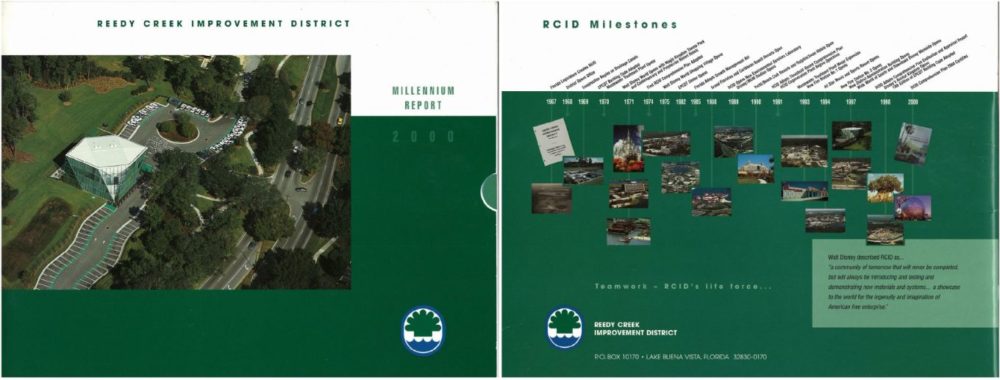
The front cover features an aerial photo of the Reedy Creek Improvement District (RCID) Administration Building, while the back hosts a timeline of milestones both for Walt Disney World and the RCID from 1967 to 2000.
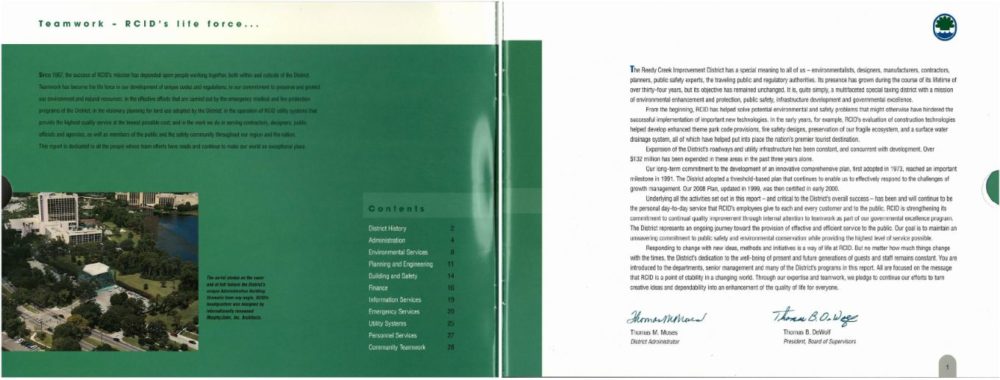
Early on, the report features a letter from District Administrator Thomas M. Moses and the President of the Board of Supervisors, Thomas B. DeWolf that offers a concise description of the District:
“The Reedy Creek Improvement District has a special meaning to all of us – environmentalists, designers, manufacturers, contractors, planners, public safety experts, the traveling public and regulatory authorities. Its presence has grown during the course of its lifetime of over thirty-four years but its objective has remained unchanged. It is, quite simply, a multifaceted special taxing district with a mission of environmental enhancement and protection, public safety, infrastructure development and governmental excellence.”
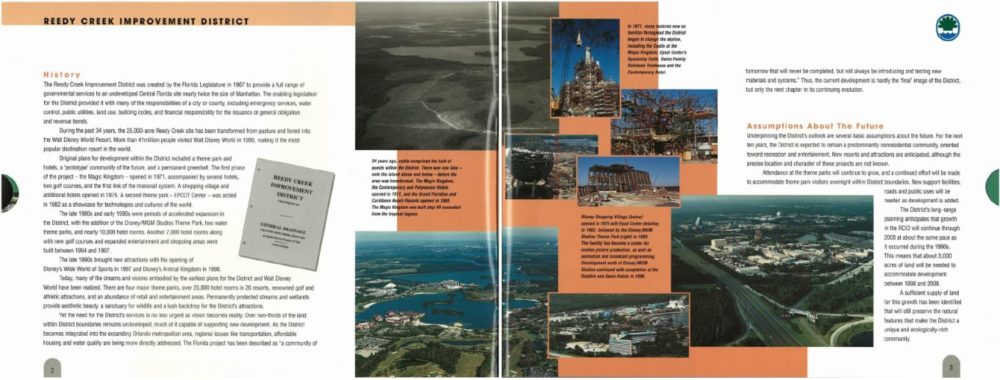
We then move into a brief history of the District, and of Walt Disney World at large, before discussing “Assumptions About the Future” for the next decade as predicted in 1998. It’s mostly general, with an expectation of resort growth and new attractions at theme parks, though there’s no discussion of specifics. It’s a pretty sure bet for Walt Disney World.
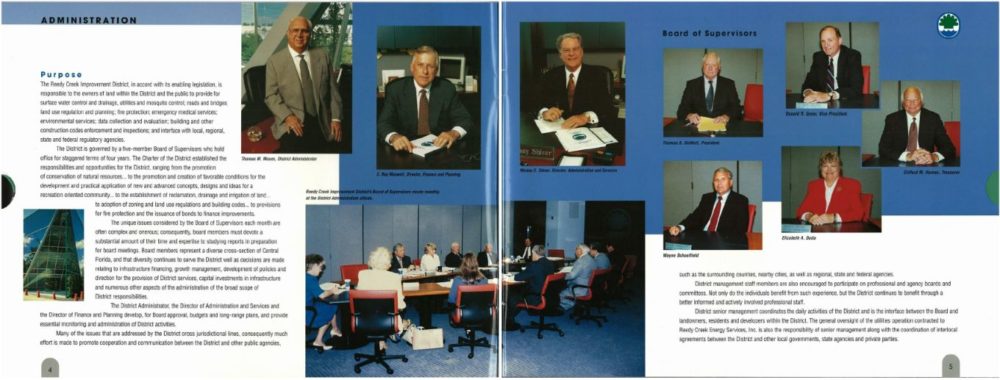
We then learn more about the District’s responsibilities along with their Board of Directors:
“The Reedy Creek Improvement District, in accord with its enabling legislation, is responsible to the owners of land within the District and the public to provide for surface water control and drainage, utilities and mosquito control; roads and bridges; land use regulation and planning; fire protection; emergency medical service; environmental services, data collection and evaluation; building and other construction codes enforcement and inspections; and interface with local, regional, state and federal regulatory agencies.”
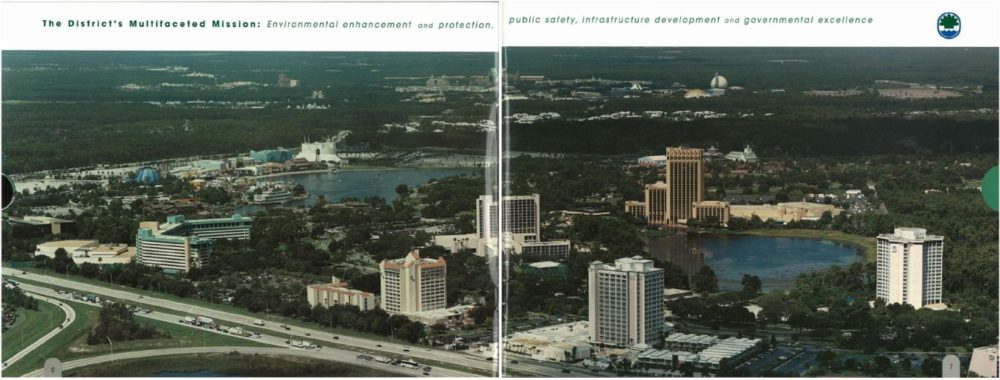
This is followed by an aerial spread of Downtown Disney and the nearby resort hotels.
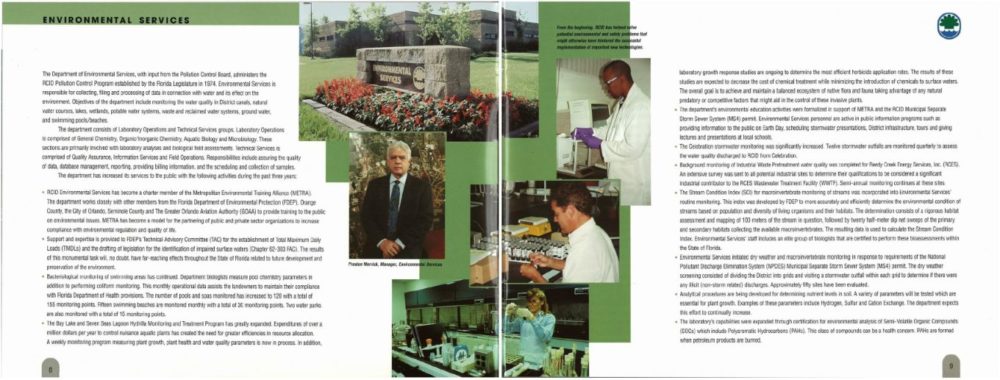
Next, we learn about the Department of Environmental Services and how they monitor the water quality around the District.
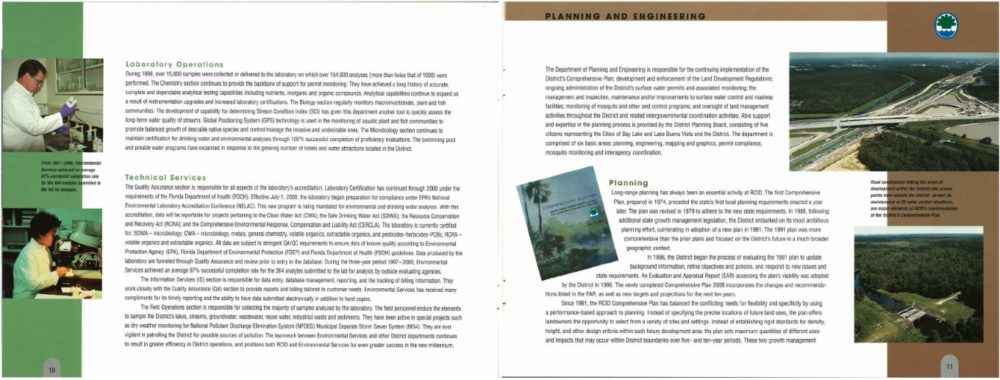
The Department of Planning and Engineering helps plan, regulate and enforce compliance with permits for all projects, including roadways, canals, and levees, just to name a few. It also helps to control the District’s mosquito population!
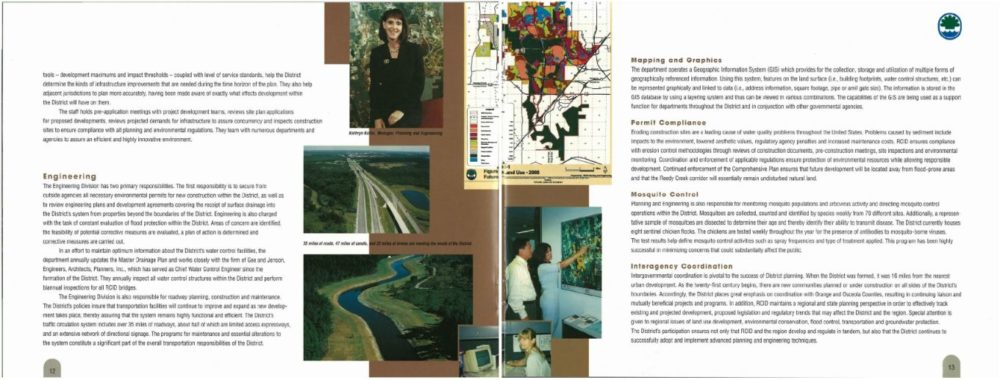
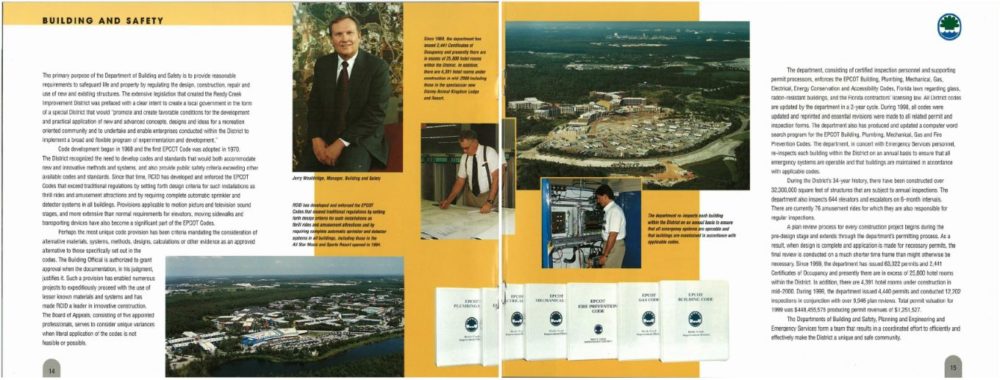
The Department of Building and Safety helps to “provide reasonable requirements to safeguard life and property by regulating the design, construction, repair and use of new and existing structures.” They also maintain safety standards for the rides, elevators, escalators all around the Walt Disney World Resort.
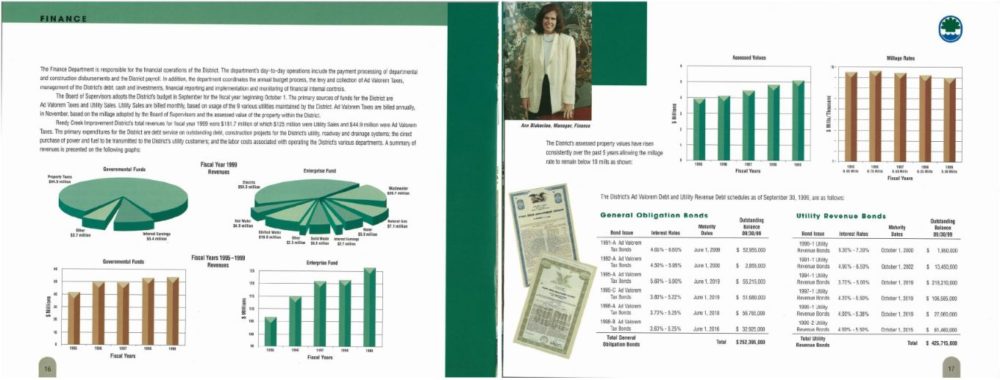
Because the RCID is a special taxing district, all residents and businesses (including Disney Parks, Resorts, and Consumer Products) pay Ad Valorem taxes to the District, and that’s where the Finance Department comes in. In addition to paying District personnel, the department also directs funds to help pay for infrastructure costs.
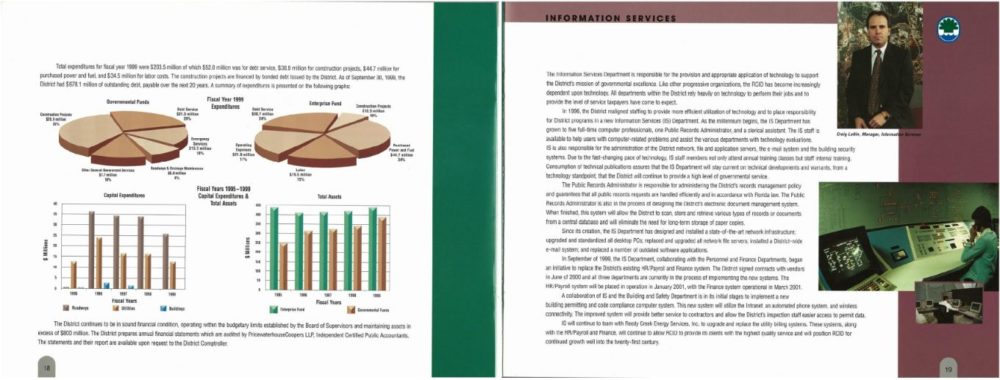
With the computer revolution near complete by the new millennium, the Information Services Department acts as the District’s IT department, helping to keep the District’s administrative systems up to date with the latest technologies.
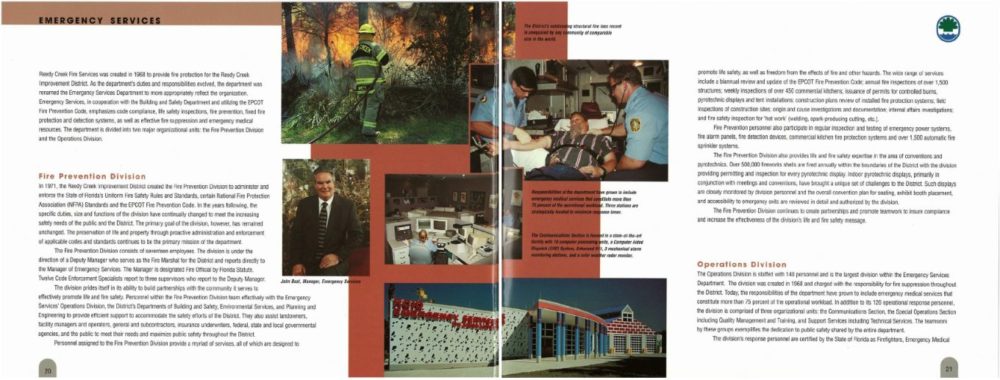
Following that is the district’s Emergency Services, including fire and medical staff, and the communications section that dispatches them where they’re needed.
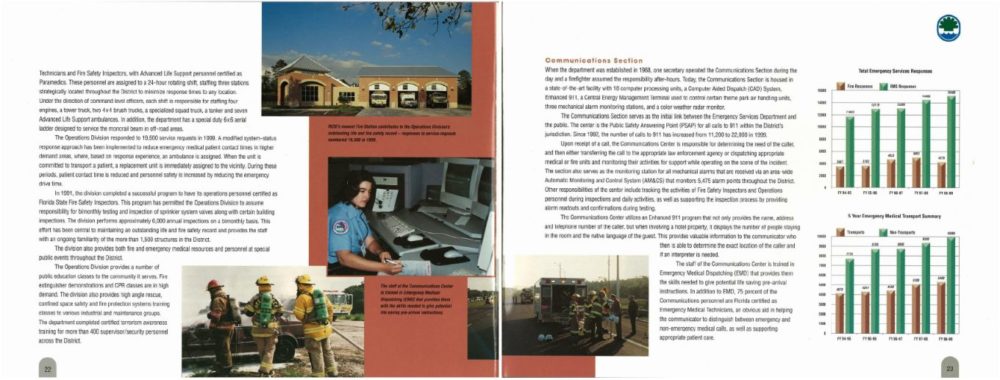
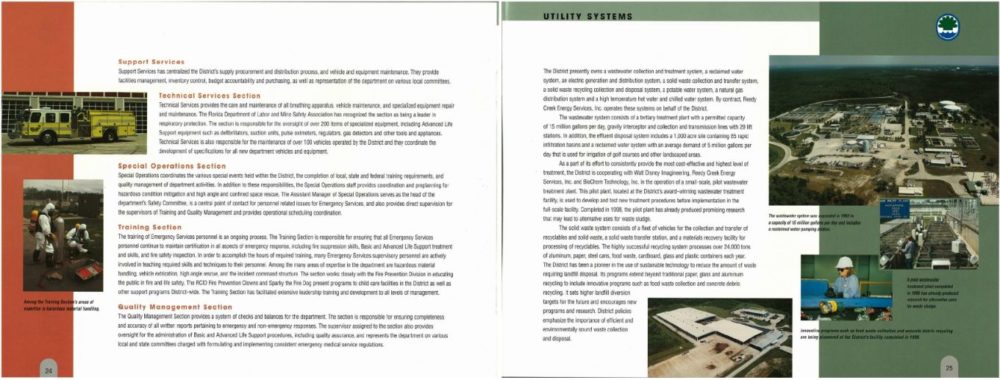
After that is the utility systems, which provide power, heat, and clean water to the District. Relatively new to the district in 2000 was a brand new wastewater treatment plant, developed in cooperation with Walt Disney Imagineering!
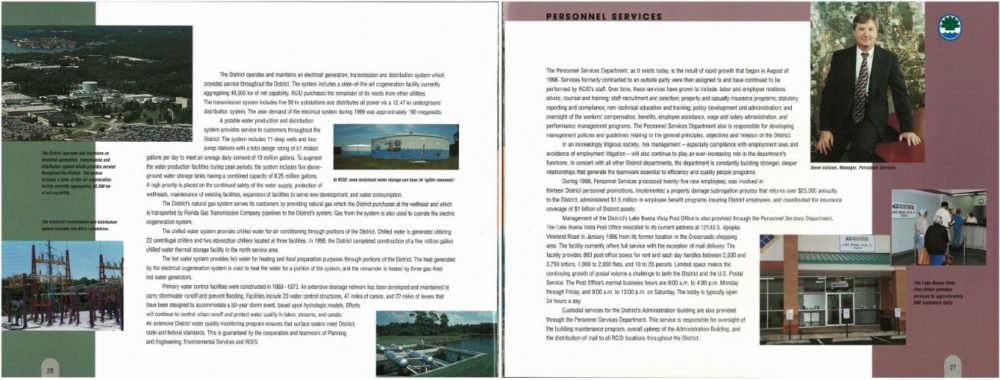
Another recent development in 2000 was the District’s de-privatization of its Personnel Services department, helping to manage District employees. Sadly, the Lake Buena Vista post office that this section boasts is no longer there.
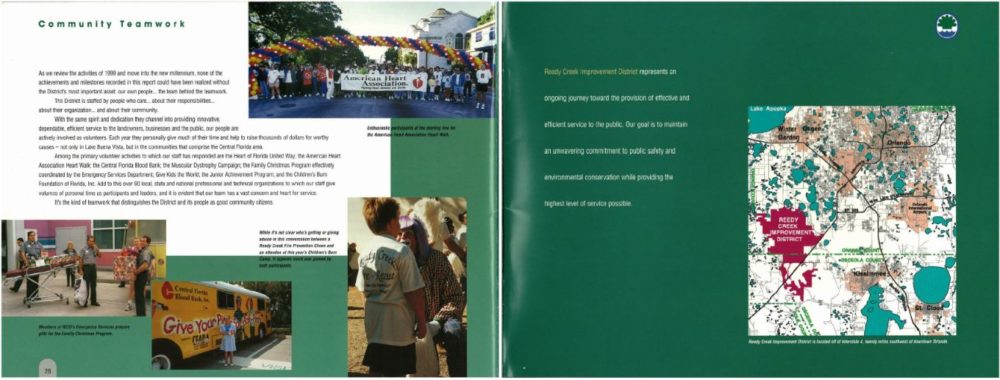
We close with a look at the District’s charitable efforts, making them a big part of a magical community!
While I’ve been able to provide a brief glance at the District’s operations (or at least as they stood two decades ago), if you’re like me and wanted to know just what the Reedy Creek Improvement District does, I highly recommend joining WIGS and seeing this report up close. It really is a fascinating and educational read.
MORE:
Get a Glimpse of Walt Disney Productions in the Mid-1960’s With this 1965 Annual Report – Part One
Get a Glimpse of Walt Disney Productions in the Mid-1960’s With this 1965 Annual Report – Part Two
Get a Glimpse of Walt Disney Productions in the Mid-1960’s With this 1965 Annual Report – Part Three


